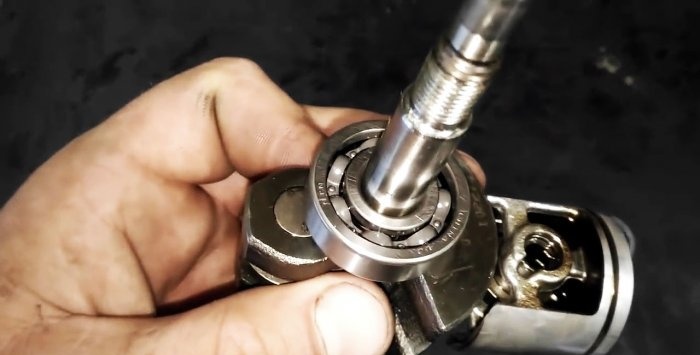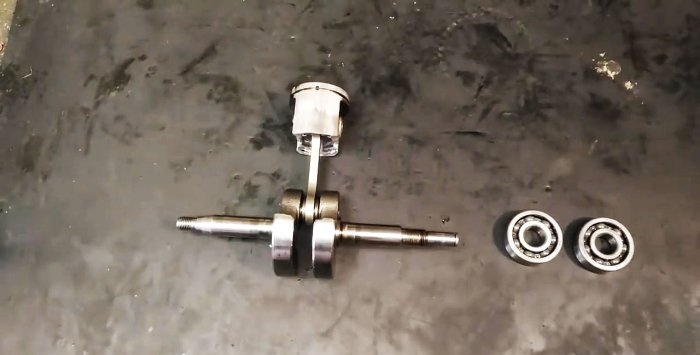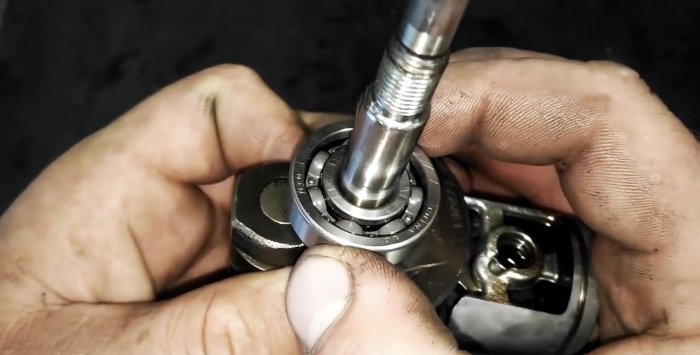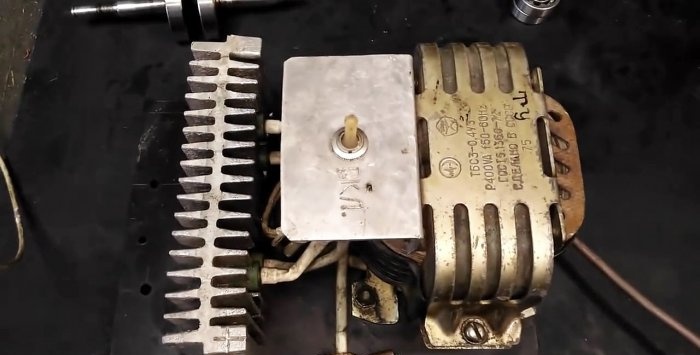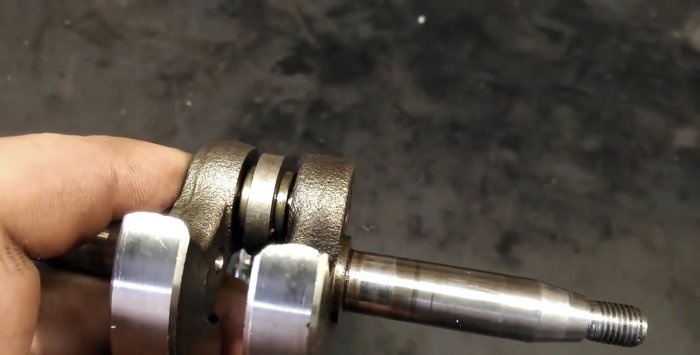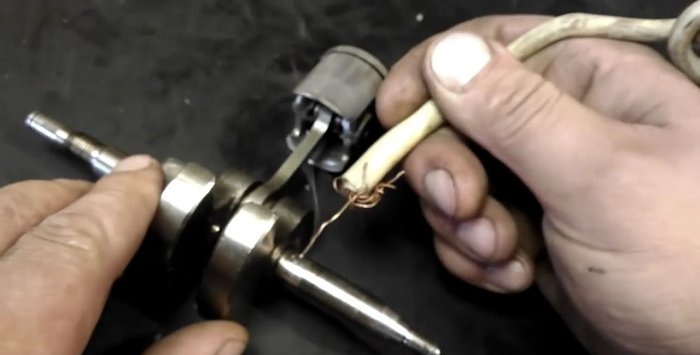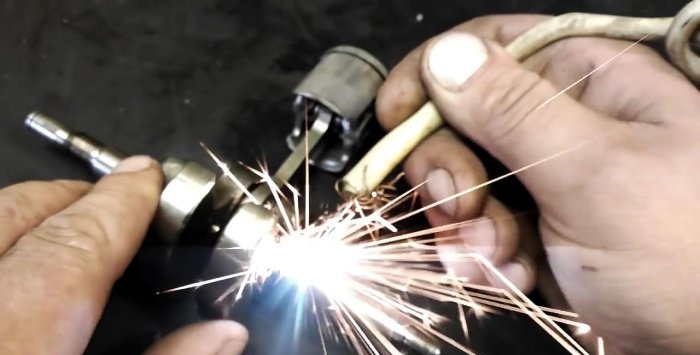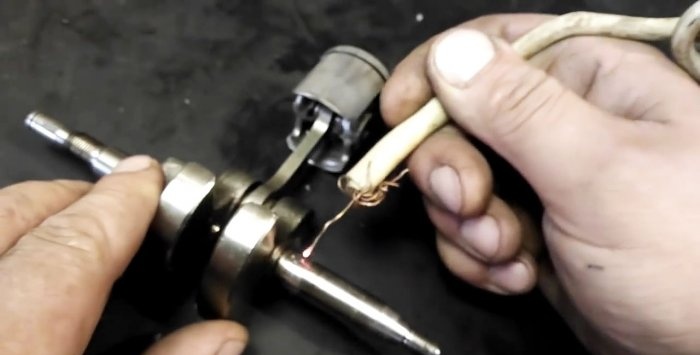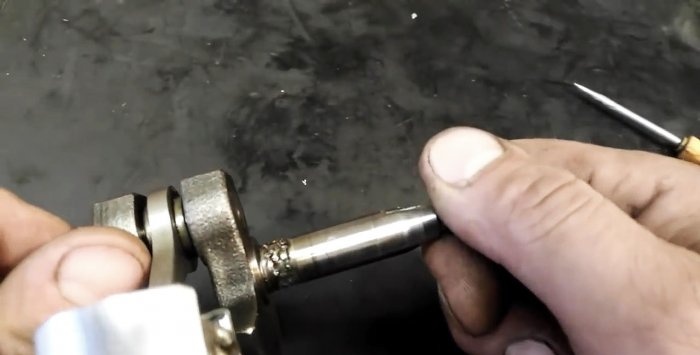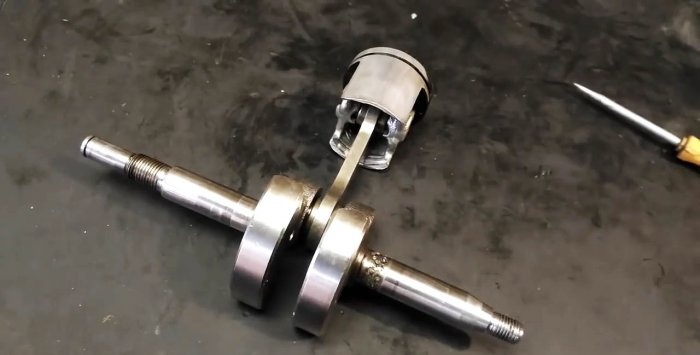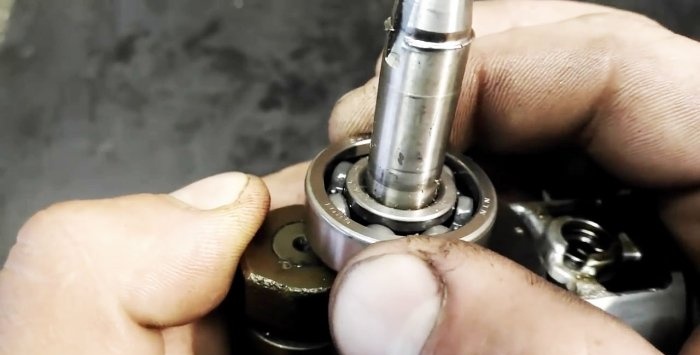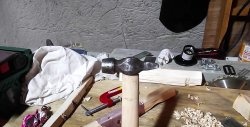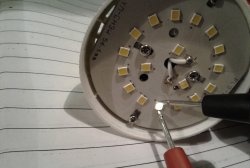Restoring the bearing seat
Small 2-stroke single-cylinder engines of low power are widely used in everyday life. They are used on chainsaws and motor mowers, in motorized ice drills and gas-electric units. And also in other models of equipment.
The disadvantage of such engines is their low service life, the main source of which is wear of the crankshaft parts on which the main support bearings are pressed. Replacing the crankshaft in such engines is an expensive proposition, since it is manufactured as a single set with a connecting rod and piston.
There are various methods for restoring crankshaft journals. One of them is copper surfacing using electric welding.
Materials and tools
To perform this crankshaft repair we will need:
- household single-phase welding transformer;
- pieces of copper wire or a thin copper electrode containing silver;
- degreasing liquid, rags;
- tube and mallet for seating the bearing.
Electric welding is a hot type of work. It is necessary to prepare a fire extinguisher, water, wet tarpaulin or asbestos cloth in advance. Welding near flammable liquids is not allowed.
Bearing seat repair process
We disassemble the engine, wash and wipe the crankshaft and perform a visual inspection of the support bearings. The presence of play between the inner race of the bearing and the presence of wear journals on the shaft itself indicate that it is necessary to restore the bearing seat. It is advisable to purchase new bearings themselves; they are a common consumable.
Thoroughly degrease the crankshaft journals worn out by old bearings with acetone and let them dry. We connect the welding transformer - car charger.
We fix the ground contact directly on the crankshaft itself, and not on the connecting rod or piston, otherwise the connecting rod bearings can be welded!
The positive contact is our electrode or wire. By briefly touching the electrode or copper wire, we begin to “spray” copper onto the worn crankshaft journal. We go through the entire worn surface.
This work requires accuracy. Do not allow the electrode to get into the part of the crankshaft where the oil seal is located!
After applying copper dots to the crankshaft journals, let the part cool. We heat the new bearing and push it into place. It may be necessary to hit the tube several times, the diameter of which is equal to the diameter of the inner race of the bearing.
All irregularities and protrusions of the deposited copper are crushed, the bearing fits tightly into place, and its inner race remains motionless.
Now there are no swings or backlashes. The bearing sits securely in place.
conclusions
This method of restoring worn crankshaft parts is simple and reliable. Do not forget about safety precautions and protective equipment when performing welding work.
Watch the video
Similar master classes
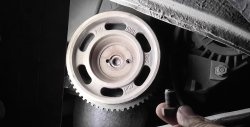
Crankshaft pulley screw broke off
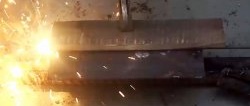
How to automate the welding process with a lying electrode
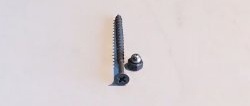
How to make a drill from a bearing for drilling hardened steel
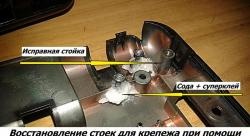
Ways to restore a broken laptop case
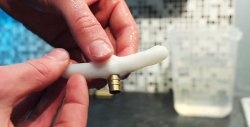
Thermoplastic is a self-hardening material for repair and
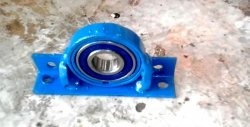
How to quickly make a bearing housing from a pipe
Particularly interesting
Comments (19)

